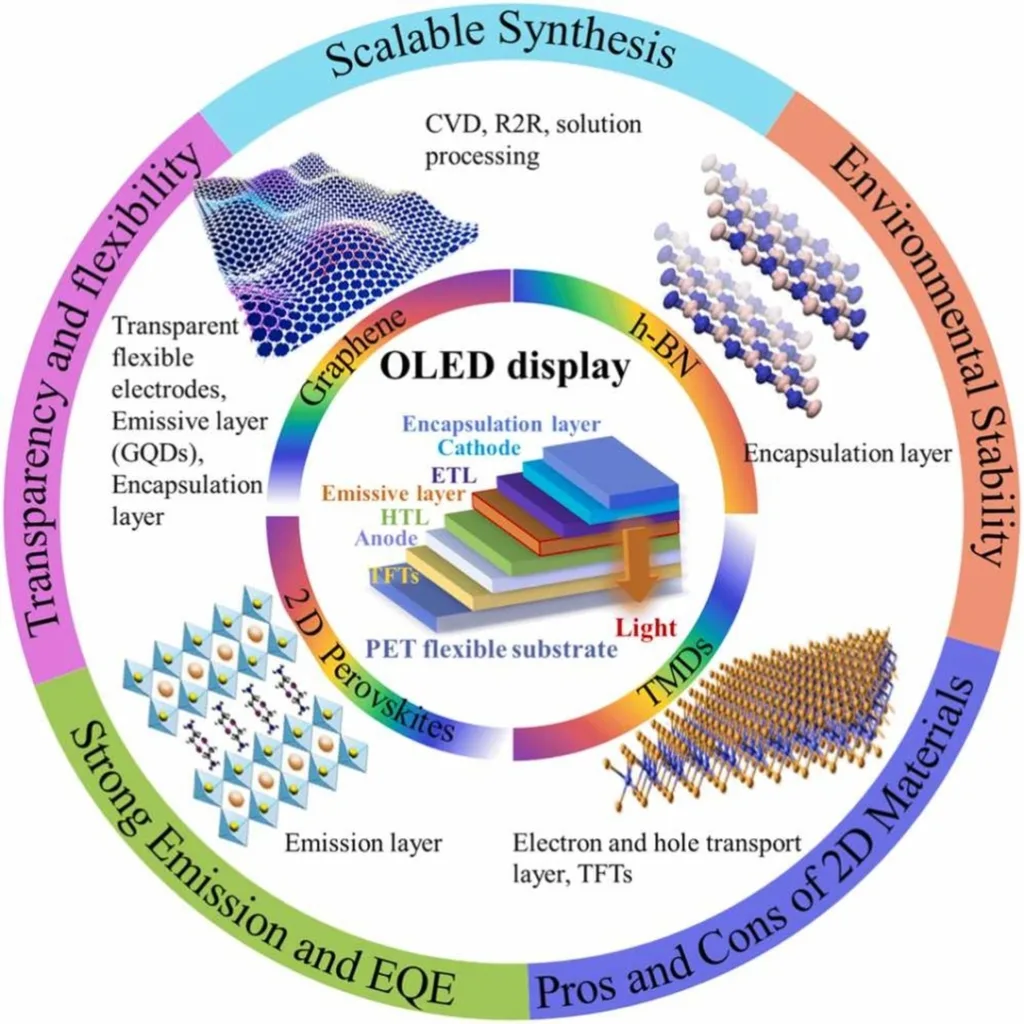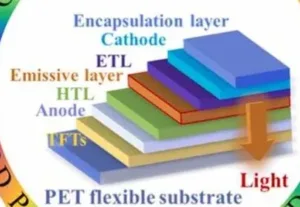Researchers from China and Taiwan recently released a review on the challenges and recent changes in flexible OLED. They found that to truly unleash their potential for flexibility and durability, the research community are turning to an exciting new class of materials: 2D nanomaterials.

2D nanomaterials, also known as two-dimensional materials or single-layer materials, are crystalline materials consisting of a single layer of atoms. These materials have a thickness of just one or a few atoms, with lateral dimensions that can be orders of magnitude larger.
Some examples of 2D nanomaterials include:
- Graphene: A single layer of carbon atoms arranged in a hexagonal lattice.
- Transition metal dichalcogenides (TMDs): Materials with the formula MX2, where M is a transition metal (e.g., molybdenum, tungsten) and X is a chalcogen (e.g., sulfur, selenium).
- Hexagonal boron nitride (h-BN): A single layer of alternating boron and nitrogen atoms in a hexagonal arrangement.
- MXenes: A class of 2D transition metal carbides, nitrides, or carbonitrides with the general formula Mn+1XnTx, where M is a transition metal, X is carbon and/or nitrogen, and T represents surface terminations (e.g., -OH, -O, or -F).
These materials exhibit unique properties that differ from their bulk counterparts due to their reduced dimensionality and quantum confinement effects. They have gained significant attention in various fields, including electronics, optoelectronics, energy storage, and catalysis.
Graphene, the wonder material composed of a single layer of carbon atoms, is a top contender for replacing brittle components in OLED displays. Its exceptional strength, transparency, and conductivity make it ideal for crafting flexible transparent electrodes.
But graphene is just the beginning. TMDs like molybdenum disulfide can be used to fabricate the semiconductor channels in thin-film transistors. Their direct bandgap also allows TMD monolayers to serve as the light-emitting layer in OLEDs. Meanwhile, insulating h-BN is a promising option for encapsulation and insulating layers thanks to its superior thermal conductivity and chemical stability.
Swapping out conventional materials for atomically thin 2D alternatives allows for thinner, more flexible displays that can withstand bending and folding without breaking. Major players like Samsung and LG are already incorporating flexible OLEDs into cutting-edge foldable smartphones and laptops.
As manufacturing techniques like chemical vapor deposition advance, the use of 2D materials in OLED displays is expected to make flexible gadgets mainstream in the near future. From wearable health monitors to foldable tablets, 2D materials are ushering in a new era of versatile, durable screen technology. The rigid displays of yesterday will soon be a distant memory as atomically thin components power our flexible digital future.
Reference
Abbas, A., Luo, Y., Ahmad, W., Mustaqeem, M., Kong, L., Chen, J., Zhou, G., Tabish, T. A., Zhang, Q., & Liang, Q. (2024). Recent progress, challenges, and opportunities in 2D materials for flexible displays. Nano Today, 56, 102256. https://doi.org/10.1016/j.nantod.2024.102256

